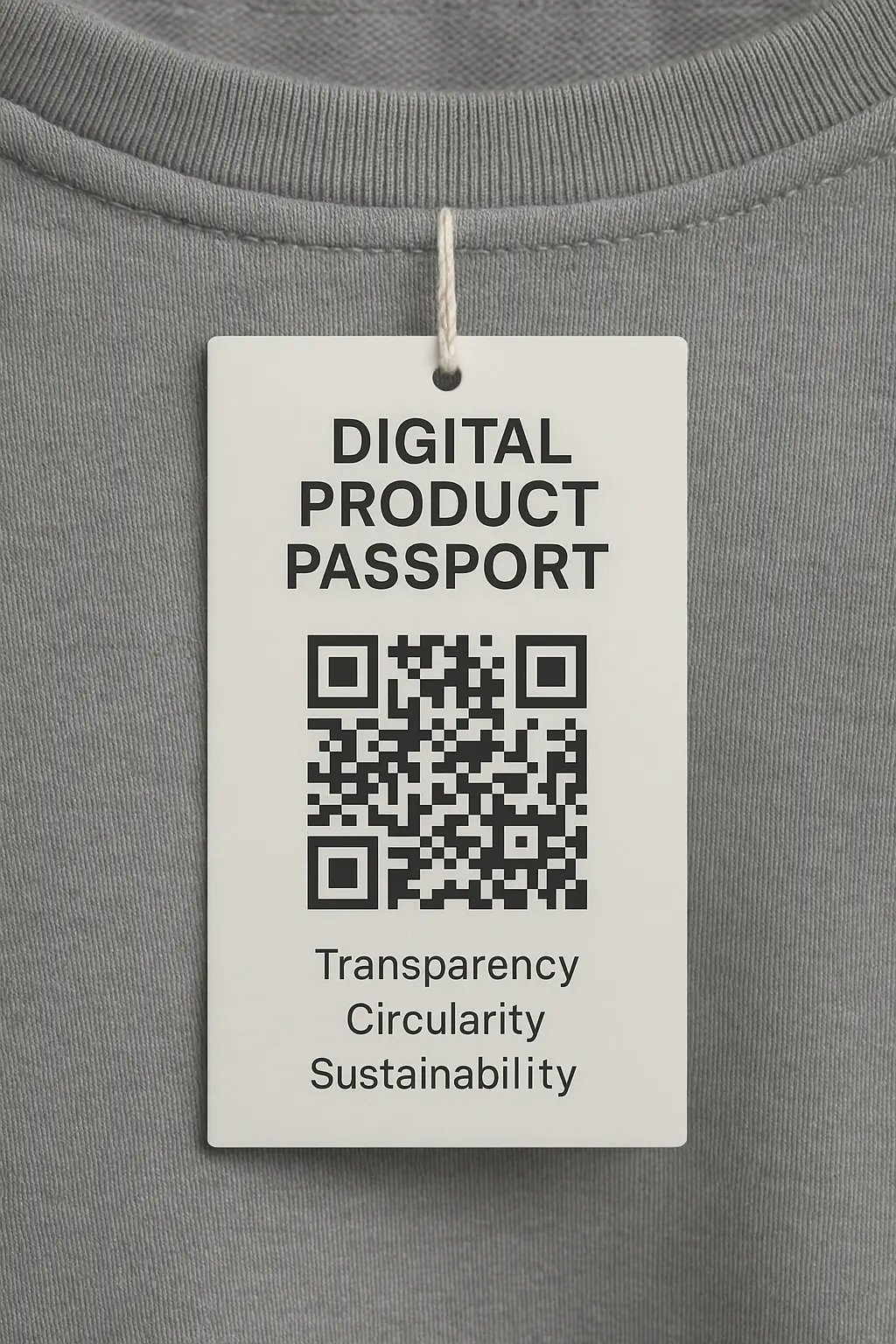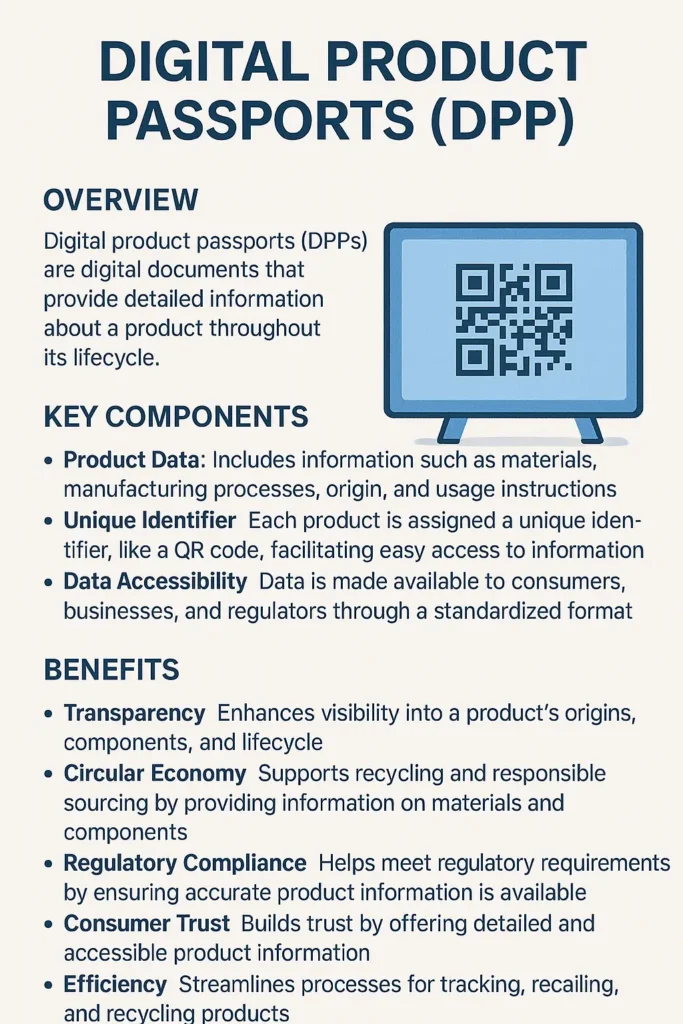By Antor Hossain
📧 antor@antor.xyz | 🌐 https://antor.xyz
Excerpt

Digital Product Passports (DPPs) are revolutionizing how we trace, use, and recycle products by making every item’s lifecycle transparent and accessible. With global regulations driving adoption, especially in the EU, DPPs are becoming essential tools for sustainability and supply chain optimization.
What Is a Digital Product Passport (DPP)?
A Digital Product Passport (DPP) is a digital record that stores data about a product’s materials, origin, environmental impact, maintenance, and end-of-life solutions. Embedded via QR codes, NFC chips, or RFID tags, this passport links to an online platform accessible by manufacturers, retailers, regulators, and consumers.
Objectives of DPPs
✅ Enhance transparency across the product lifecycle
✅ Support circular economy models (reuse, repair, recycle)
✅ Enable informed consumer choices
✅ Ensure regulatory compliance (e.g., EU’s ESPR mandate)

The Regulatory Framework (EU’s ESPR)
The European Union’s Ecodesign for Sustainable Products Regulation (ESPR) mandates DPPs for key industries, starting with:
- 🔋 Batteries by 2026
- 👕 Textiles, electronics, and more by 2030
These rules ensure that all products sold in the EU carry a DPP, irrespective of where they were manufactured.
Core Components of a Digital Product Passport
| Component | Description |
|---|---|
| Unique Identifier | GS1 barcode or ISO/IEC 15459 code linking the product to its digital data |
| Material Composition | Raw materials, chemical content, and recyclability |
| Environmental Impact | Carbon footprint, water usage, and energy consumption |
| Repair & Maintenance | Manuals, replacement part data, repair instructions |
| End-of-Life Options | Disposal, recycling centers, take-back programs |
UX-Friendly DPP Interface Design Guidelines
- Mobile-First Design: Ensure QR/NFC access works smoothly on all devices.
- Accessible Layout: Follow WCAG guidelines for users with disabilities.
- Progressive Disclosure: Show summary data first; allow deeper dives.
- Trust Signals: Include verification badges (e.g., blockchain authentication).
- Offline Access: Cache key data for low-bandwidth environments.
Benefits for Stakeholders
🎯 For Brands & Manufacturers:
- Full supply chain transparency
- Better control over product recalls and lifecycle
- Competitive edge in sustainability reporting
🛍️ For Consumers:
- Verifiable product authenticity
- Repair guides to extend usage
- Eco-data to guide sustainable buying
♻️ For the Environment:
- More reused and recycled products
- Fewer carbon emissions and resource wastage
Examples of DPP Implementation
- Balenciaga: DPP-linked garments with digital storytelling
- Philips: Products with DPPs to promote circular models
- Automotive industry: Battery passports for EVs mandated by the EU
Challenges in Adopting DPPs
- 🚧 Data Standardization: Harmonizing global formats
- 🔄 Interoperability: Connecting different systems and tools
- 💰 Initial Cost: High setup costs without short-term ROI
- 🧠 User Education: Consumers need guidance to understand and use DPPs
Best Practices for Implementation
- Start with pilot programs in high-impact product lines
- Involve cross-functional teams (IT, compliance, UX)
- Use open standards (like GS1 Digital Link)
- Collect user feedback continuously for interface refinement
Conclusion
Digital Product Passports are more than a regulatory requirement—they are an innovation catalyst. They empower businesses, inform consumers, and advance sustainability. By embracing DPPs, industries can transform their value chains into transparent, circular, and data-driven ecosystems.
✅ References
- European Commission (2022). Proposal for a Regulation on Ecodesign for Sustainable Products (ESPR). https://ec.europa.eu/info/news/proposal-sustainable-products-2022-mar-30_en
- Ellen MacArthur Foundation. Digital Product Passports: Unlocking a Circular Economy. https://ellenmacarthurfoundation.org
- GS1 Digital Link Standard. Connecting Physical Products to Digital Information. https://www.gs1.org/standards/gs1-digital-link
- Circle Economy & European Environment Agency. Exploring the Circular Economy Potential of DPPs.
- OECD (2023). Product Sustainability and Traceability Initiatives. https://www.oecd.org
Need Expert Support in Sourcing and Sustainable Apparel Production?
In need of professional sourcing and production support? Contact me at antor@antor.xyz or visit my website https://antor.xyz.
Share Button